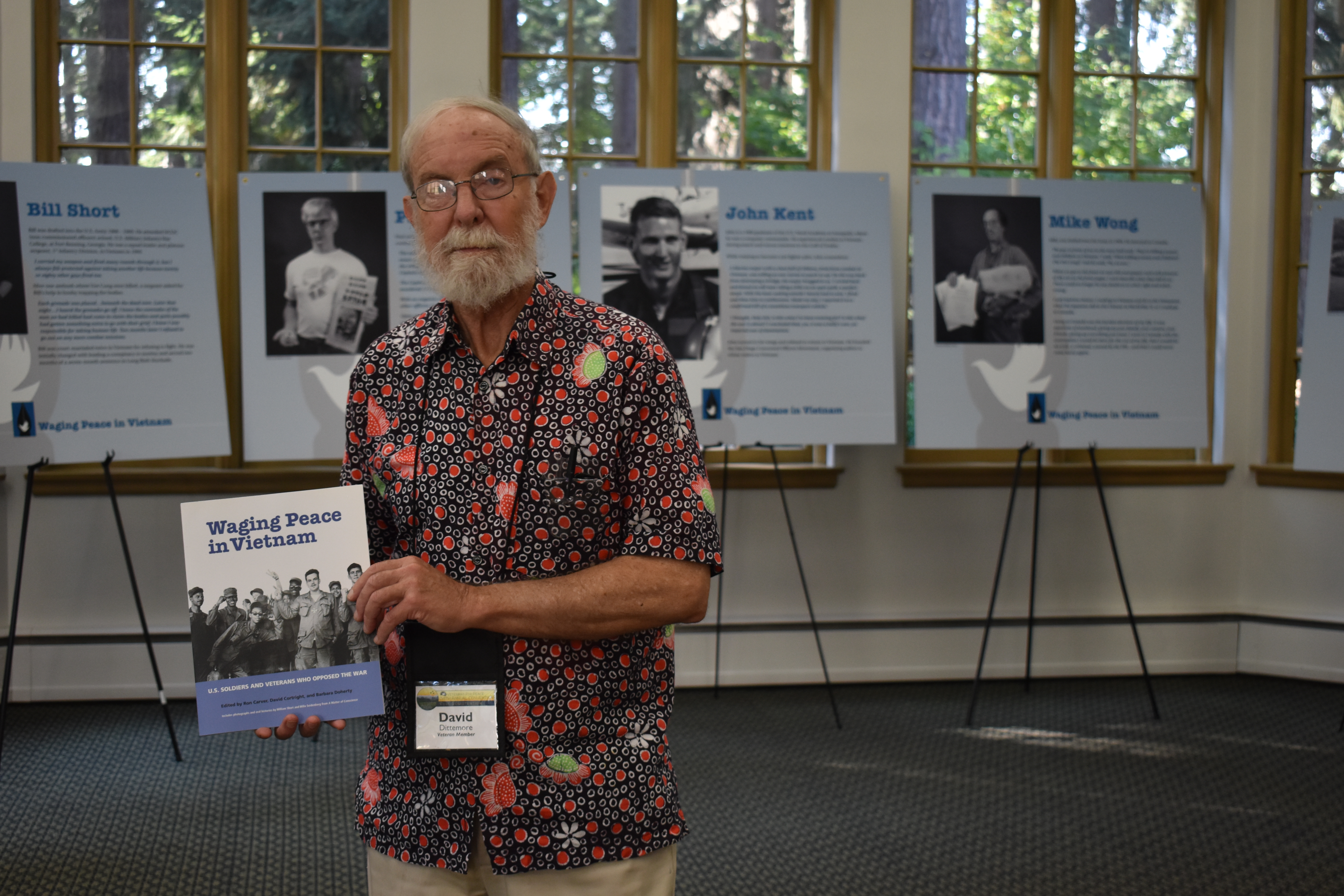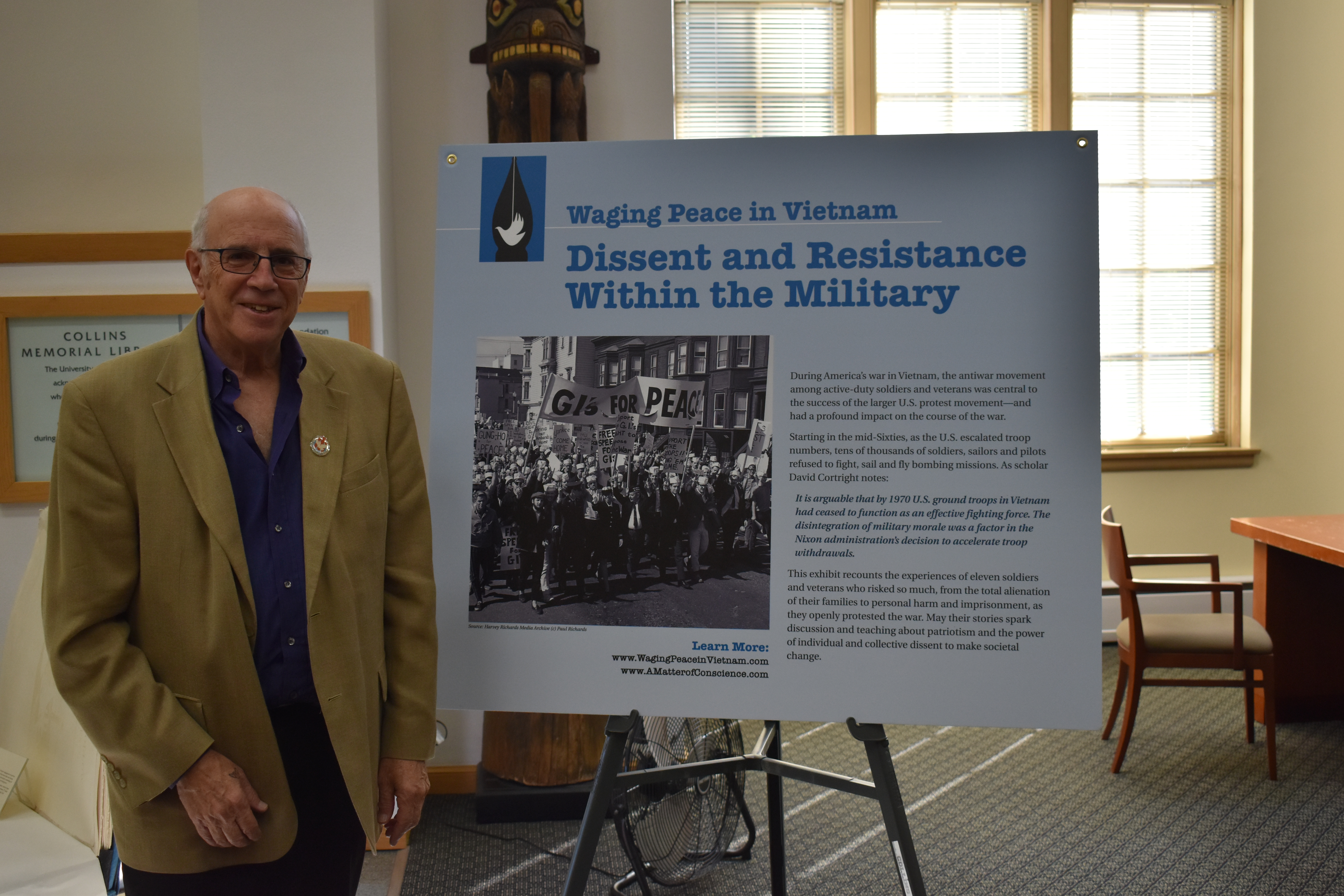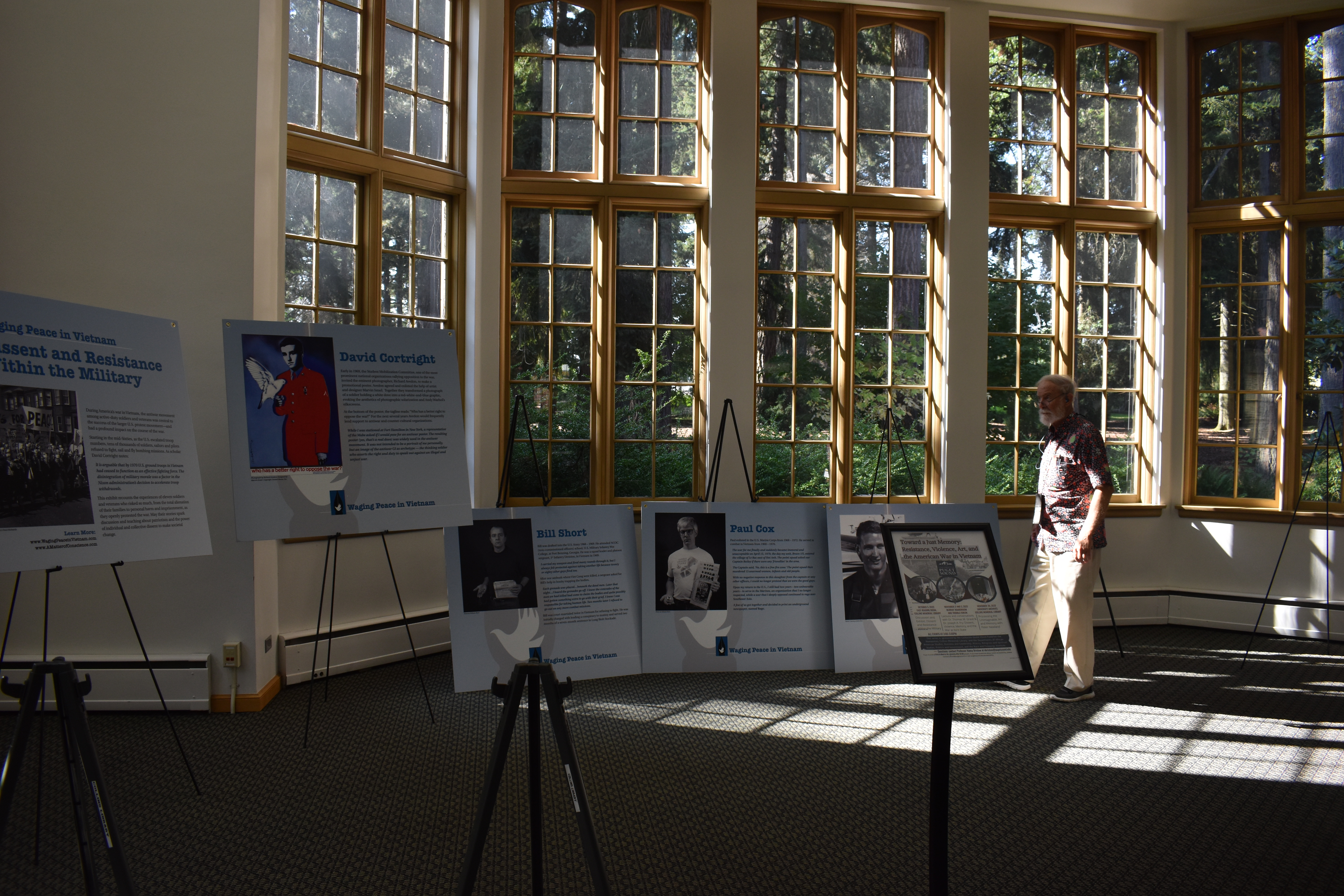
A part of the movement: resistance by GIs during Vietnam era
Listen
(Runtime 1:00)
Read
It wasn’t just civilians who turned to peace in protest of the Vietnam war. Active-duty military personnel and veterans led a resistance from within and outside of the armed forces. The Dissent and Resistance Within the Military exhibit tells some of their stories.
“After they were in Vietnam, and they saw what our army was doing to people there, then they felt betrayed by our government,” said exhibit curator Ron Carver.

Curator Ron Carver, who wants the stories of men and women in the military who resisted the war in Vietnam to be remembered. Photo by Lauren Gallup.
Carver created the Waging Peace in Vietnam: U.S. Soldiers and Veterans Who Opposed the War exhibit, in 2018, which has been featured at universities across the country.
“Many people know that there was a vibrant peace movement against the war,” Carver said. “Very few people, including scholars who teach about the war, who teach political science or sociology movements of the 60s and 70s — very few of them are aware that there were actually tens of thousands of active duty soldiers who opposed the war.”
The University of Puget Sound is displaying Carver’s smaller version of the exhibit, Dissent and Resistance Within the Military, in the Collins Memorial Library.
One of the stories of resistance on display is Bob Chenoweth’s. Chenoweth, an Army helicopter pilot, was shot down by the Vietcong, captured and brought to the prison in Hanoi. Chenoweth is quoted as saying the day he was captured was his “red letter day” because it allowed him to get to know the Vietnamese people, their culture and learn more about the war. Afterwards he became an anti-war activist and voice for peace.
The Pacific Northwest has a history of opposition. Multiple underground anti-war newspapers were distributed by soldiers in Washington. And the Shelter-Half coffeehouse, a space for returning and departing soldiers to speak candidly and coordinate opposition, operated in Tacoma for six years.
David Dittemore is a veteran of the Vietnam war and member of Veterans for Peace. He was at the installation day for the exhibit.
“It’s disillusionment, ” he said. “We were here, you know, [we] thought we were saving the world or whatever. And it turned out, it was very much different than what we were led to believe.”
Dittemore didn’t get involved in the peace movement until the United States invaded Iraq in 2003. That’s when he joined the Veterans for Peace chapter in Tacoma.

David Dittemore joined Ron Carver to install the exhibit at the University of Puget Sound. Photo by Lauren Gallup.
The exhibit, he says, is an opportunity for people to learn more about the war, and opposition movement, during the Vietnam era.
“I think a lot of them will probably have heard the word Vietnam, but not understand the subtleties, and the tension and anxiety that people went through,” Dittemore said. He also pointed out the high rates of PTSD, suicide, homelessnes and the other impacts of war on veterans.
Carver sees the exhibit as an inspiration for young people today.
“Whatever your passion is, think about the soldiers and sailors who were up against such great odds and yet prevailed in ending the war,’” he said. “So we want young people today to not be discouraged, to be inspired by the stories.”
As part of the exhibit, there will be an essay contest for students. Former Associated Press photographer, Nick Ut, who is best known for his photo of a 9-year-old girl, Phan Thị Kim Phúc, running toward the camera from a South Vietnamese napalm strike that mistakenly hit in her village, will be judging the essays.
Dissent and Resistance Within the Military will be on display at the University of Puget Sound Collins Memorial Library through October 28.















